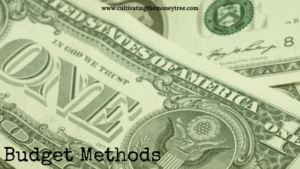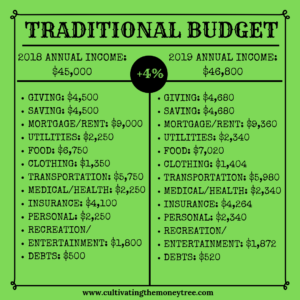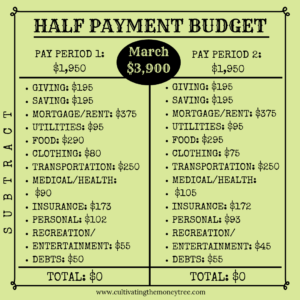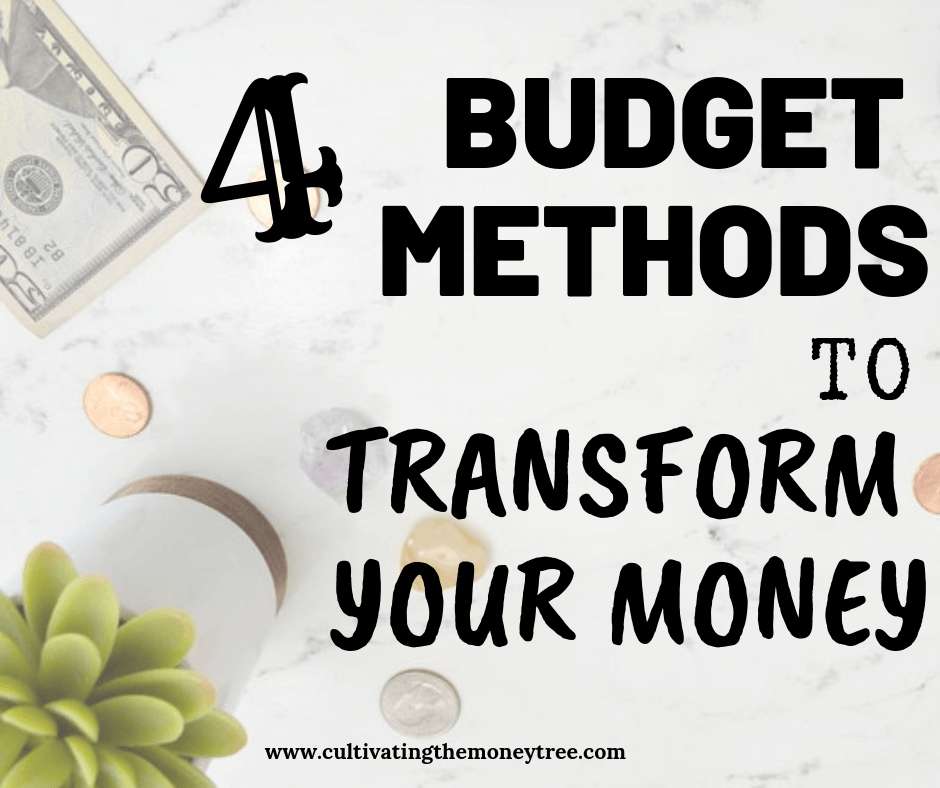DISCLOSURE: THIS POST MAY CONTAIN AFFILIATE LINKS. I MAY RECEIVE A COMMISSION FOR ANY CLICKING AND PURCHASE MADE THROUGH ANY LINK WITHIN THIS PAGE. PLEASE READ MY DISCLOSURE FOR MORE INFO
Do you know where all your money is going? Do you know how much income you’re bringing in? Are you paying your bills on time each month? Do you consistently have more bills due at the end of each month then what is left in your bank account?
At one point in our lives, we were prisoners to this type of lifestyle. We knew the amount of our income, but we weren’t tracking our expenses. This created issues like consistently paying bills late and not having our habits in check. This only kept adding to our current situation as we incurred more fees with each billing cycle. We even went through a phase where we were over drafting our account every pay period just to keep up. I feel you, I have been on the side of the poor and broke!
Fortunately, there is a way to break out of this cycle. It will take digging deep, persistence, self-motivation, self-discipline and a whole lot of nos. I feel it necessary to tell you that you must be prepared to do this for the long term. Like many things in life, there is no quick fix. Perhaps for a short period of time, you may feel relief. However, over time if your habits and mindset do not alter then you may find your way right back into the cycle.
Are you ready to take back control of your money? Are you ready to know what you are bringing in and what you are cash flowing out? Do you want to start meeting your goals or checking off your bucket list?
We definitely reached a point in our lives two years ago where we were fed up! While we were tracking every penny in a check register, we were not actually planning our spending. Now, for the most part, we were paying our bills first before spending on non-essentials. However, we were only paying the minimums on our current debt while also adding to debt to cover essential items needed. I am sure it is also no surprise that we were not contributing to any type of savings or retirement at the time either.
This cycle continued for multiple years where we allowed our decisions to be made by our latest account balance. This only brought on guilt and the stress of never having enough! We definitely didn’t have that sense of financial security. Once we finally were fed up, we started asking ourselves what do we need to really jumpstart our journey to financial freedom.
Do We Need A Budget?
During this time, I thought back to the lessons I had learned from a Dave Ramsey course years prior. It dawned on me after reviewing his lessons that we were not actually using a budget for our money. We were only tracking our money after it had already been spent. This is when I decided to start taking back control of our money by building a budget through the Everydollar website.
Part of learning how to take back control of your money is to understand where and how you spend your money. We knew we were spending money but we didn’t understand exactly where all of our money was going. We finally started to understand this after we began breaking our spending down into categories. Now, this can be quite the task if you have never kept track of your income and expenses before. Especially, if you were like us who would just check their balance daily as our way of saying yes to impulse buying. Thanks to Everydollar, we could start to see a visual of the areas of our life we spent money on. We knew that once we starting planning and following a budget that we were taking the right steps into creating financial security for our family.
Now, Everydollar has helped us tremendously continue to stay on budget. However, the way that we choose to budget may not be the best way for you to budget your money. The type of budget you use to cultivate your finances may depend greatly on the current stage of your financial journey. Recently, we have been considering adapting to a new budget method. We currently use the zero-based budget but have been exploring a few other types of methods.
We thought that sharing what we have discovered may also help you determine the best budget method for you!

Traditional Budget
A traditional budget utilizes the prior year’s income and expense amounts as the starting point for each year after. The initial set up of a traditional budget can be quite the project. This requires knowing what your annual income and expenses are. If you have been lacking in tracking your expenses then there will be some research like gathering 12 months worth of statements and calculating your monthly expenses to determine your annual expenses. This is a line item budget so you would be tracking every category and subcategory possible to group your expenses.
After you have a full calculation of your total net income and annual expenses from the previous year you would then use these numbers as your starting point for your next year’s budget. Traditionally you would then predict and add an income percentage to all your numbers if you receive annual income increases. For example, you could plan for a 4% increase in income which would then be transferred to each line item of your expenses.

This budgeting method appears to take on a routine approach to life and money. Each year an incremental increase is added to each line item starting with the previous years’ amounts. This may work great for those who live a very similar lifestyle for years at a time. The incremental income increases appear to also provide allowance if the cost of living prices fluctuate. While it can be a bit time-consuming in the beginning, it truly provides a simple method to budgeting.
We find that it is only simple if you do not encounter any unexpected expenses or lifestyle changes. IIf you create a MISC line item to cover out of the ordinary spending then it may be easier to align spending with financial goal strategies. The predictions that are made for the increase in income and expenses could be inaccurate and lead to over-budget spending. Budgeting on an annual basis may also bring a lack of motivation to follow through with needed changes to behavioral spending habits throughout the months of the year. This may only be a disadvantage to those who have financial goals that require changes in habit. Needless to say, if you are self-discipline and hold yourself accountable well then this budget method may be for you.
Before deciding to utilize traditional budgeting as your method of choice we suggest doing your own research. We came across an article on Wall Street Mojo that highlights the advantages and disadvantages of traditional budgeting. We found it useful as we are currently reviewing the best budget method for us as well!
Zero-Based Budget
A zero-based budget takes into account the previous month’s expenses plus any new expenses. Much like traditional budgeting, the zero-based budget requires some time to initially set up as you need to know your monthly income and recurring expenses. After the initial set up this budget method can be quite simple and flexible. The flexibility comes from the ability to change amounts throughout the month to account for unexpected expenses.
The key to this budget method is your sum should be a $0 balance. This may make you feel as if you are spending all your money but that is truly not the case. You would want to make sure that you include what you contribute towards giving, investing, and savings into your different categories as well. By giving every penny a job, you are giving yourself permission to spend. This allows you to move forward with confidence and peace of mind, knowing that everything is accounted for.

This budget type may work great for beginners or for those who need ultimate control of their money. If an unexpected expense pops up then you would borrow from a different expense category. This means that you may have to dine out less or go without a few coffees for the month. This budget method is great for those who are learning how to live on a budget. Sometimes this means starting out with tracking even the smallest of expenses.
While this is a great tool to incorporate into your daily finance habits, there are some drawbacks to consider. Those who have time restrictions may want to reconsider utilizing this budget method. The amount of planning and tracking that can be involved with this budget method may overwhelm or create more stress for those with tight schedules. However, there are ways to alleviate the time consumption by utilizing an automatic tracking program. There are many products available that can assist in automating this process. Regardless, this plan can create flexibility while also developing skills such as self-discipline and accountability.
We have been utilizing a zero-based budget since we adopted Dave Ramsey’s philosophy. At the time this method made the most sense for us. Dave Ramsey’s methods aren’t for everyone. However, the budget method he recommends has been used by countless individuals working towards debt freedom. Find out if the zero-based budget method is right for you by reviewing more advantages and disadvantages provided by Investopedia.
Proportional Budget
A proportional budget is a method that takes your monthly expenses and groups them into a small number of categories. A percentage of your monthly income is then assigned to each budget category. Proportional budgets are also commonly known as the 80/20 or the 50/30/20 budget method. These types of budget methods can provide a simple and flexible approach to budgeting.
The 50/30/20 budget method breaks down monthly expenses into just three categories: needs, savings, and wants. This budget method can be made more simple and successful by defining what your needs, wants and savings goals are ahead time. Understanding your financial goals will allow you to properly place your expenses in the right categories. This can help prevent less chance of overspending and breaking your budget.

The expenses that you put into each category may depend on your family needs and personal financial goals. Typically, needs would be expenses such as housing, utilities, groceries, transportation cost, health care, and clothing. Based on your survival needs your essential expenses may be different. Your survival needs may also be different based on aspects of your life such as age and geographical location.
After you have determined your needs expenses, you would then determine your savings needs. The focus of your savings expense may depend greatly on your current life status and your personal finance goals. A savings category typically includes investing money into something for future use. Things like retirement funds, emergency funds, college funds, and debt repayment are things that can provide ease later in life. How many times have you thought to yourself, “if only I knew back then what I know now”? There are countless times I have kicked myself for not planning ahead more thoroughly. Needless to say, these past failures allowed me to understand the value of investing in these accounts now. This budget method helps take the guesswork out of what to contribute to savings as well.
Once you have determined the focus of your savings categories, you can move onto the last spending category. This last category allows 30% of your income to go towards guilt free wants. These are typically the extras and luxuries in your life that make life just a little sweeter. Adding these things into your budget can also help prevent overspending in your other categories. Different types of expenses found in this category would be cable TV, dining out, new technology, vacations, junk food and additional clothing and accessories beyond your basic clothing needs. Really any miscellaneous expense outside of needs and savings would fall into this category. You can learn more about the 50/30/20 budget method over on The Balance.
Proportional budget methods are great for experienced budgeters as you would want to have a good understanding already of your spending habits and financial goals. Lastly, the simplicity of this budget method frees more time for you to pursue other life goals!
Half Payment Budget
This budget method came about by breaking down your monthly expenses into half payments based on a bi-weekly pay schedule. Despite the name, half payment, monthly payments can be broken down by the frequency of your pay. This budget method is great for those who are trying to break out of the paycheck to paycheck cycle.
While the other budget methods are great at planning out monthly expenses, this method takes it one step further by also considering the due dates of each monthly expense. It is rare to find multiple bills that are due evenly across the month. When you have a larger amount of bills due around one pay period and not the other, it can create an unbalanced monthly budget. When your budget is unbalanced between pay periods, this can create more stress than necessary during the month.

As we began to research different budget methods, we amazingly discovered that the Half payment budget had a name. Since the time I learned how to track and reconcile my spending, I naturally adopted the concept of splitting up my monthly expenses. However, I was not applying the split payment towards my bill which led me to poor money management decisions such as overspending.
Reflecting back to that time, I realized that by leaving the half payment balance in my bank account, I kept the temptation of “borrowing” from its present. Had I committed to actually paying half payments towards my bills and not my bank account, I would have stayed on a budget more frequently. Another option to avoid temptation and stay accountable is to have your billing companies set up automatic drafts every two weeks to cover your half payment.
Needless to say, utilizing the half payment budget system has given us the ability to take more control of our money. We now see consistency in the ability to cover all our fixed and variable expense each pay period. We have learned now, though, that you have to follow through in making payments to the bills you delegated for that pay period. Otherwise, you may find yourself right back in that cycle of never having enough!
Related Content:
- How to Gain Control of Your Spending
- Gain More Control With These Savings Account
- 4 Money Concepts to Know to Take Control of Your Money
Budget Method Overview
We believe that any of these budget methods can help get your finances on track. The success of each of these budget methods will differ based on your own goals, discipline, and motivation. Once we identified our financial goals, we could work on our self-awareness of our self- disciplined. The lack of clear vision and self-discipline gave us the needed motivation to start moving forward in a positive direction. Now that we had the motivation and the vision of our financial goals, we worked on the discipline needed to create and stick to budget. This was the driving force behind us balancing our budget month to month. However, our life has changed over the last year which has prompted us to review the approach we use when budgeting our finances. Cue, the research on different budget methods available!
So did any of these budget methods above peak your interest? We found a few of these methods to be interesting. In fact, we started thinking of ways these methods could help us more to reach our financial goals. We thought about what would happen if we just combined a few of these budget methods. This possibility could really cultivate the ultimate budget transformation. We have decided to take the time and research necessary to approach a combined method of budgeting to our monthly finances. A variety of budget methods can be created to fit your financial needs by combining multiple types. No matter what budget method you choose to follow on your journey, remember it will take time to see the impact that it helps to produce.
Nonetheless, the understand the process of adopting multiple budget methods will not be simple. Despite the complexity, we believe the time and discipline involved with be worth it in the end. We are interested to see the opportunities that arise by combining multiple budget methods towards our financial goals. Stay tuned to learn more about how following a Combined Budget Method will help us on our journey to financial freedom!




[…] 4 Budget Methods To Transform Your Money […]